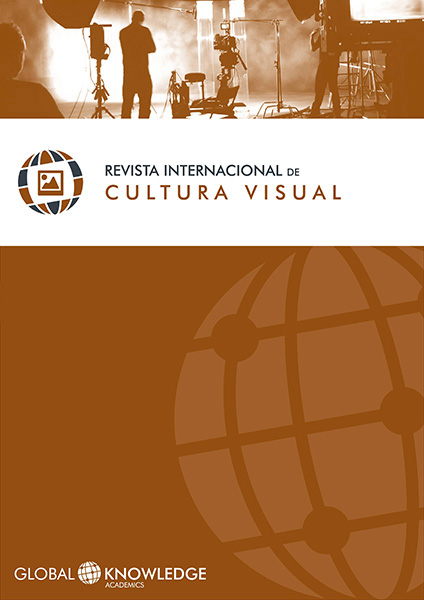The Spectacularization Syndrome of Digital Visual Effects: Mannerist Cinema
DOI:
https://doi.org/10.37467/gka-revvisual.v1.639Keywords:
Digital Films, Visual Effects, AestheticsAbstract
This study tries to figure out how Hollywood pictures exaggerate the representation of reality turning digital films into a baroque creation far away from the audience. There is a nonsense fight between the biggest studios to compete in CGI and create the most spectacular visual effect in order to get success. However, that digital dependence has forgotten the main idea of cinema: the representation of a fiction story based on the real world. Due to this, visual effects dominate Hollywood market and have become their own problem.
Downloads
References
Bordwell, D. (1997). On the history of film style . Cambridge, MA: Harvard University Press.
Bordwell, D. (2005). Figures traced in light: On cinematic staging . Berkeley & Los Angeles: University of California Press.
Bordwell, D. (2006). The way Hollywood tells it: Story and Style in modern movies . Berkeley & Los Angeles: University of California Press. DOI: https://doi.org/10.1525/9780520932326
Bordwell, D. (2007). Poetics of cinema . New York: Routledge.
Bordwell, D. (2013). El 3D como caballo de Troya. Liderazgos y tensiones en la digitalización de la exhibición estadounidense. Archivos de la Filmoteca, 72, pp. 13-21
Cortés Selva, L. (2013). Principales aplicaciones expresivas derivadas de la hibridación analógicodigital. El estilo visual realista. Archivos de la Filmoteca, 72, pp. 23-35.
Furniss, M. (2007). Art in motion: animation aesthetics . United Kingdom, Eastleigh: John Libbey Publishing.
La Ferla, J. (2009). Cine (y) digital. Aproximaciones a posibles convergencias entre el cinemat—grafo y la computadora. Buenos Aires: Manantial.
Mittell, J. (2009). Genre & Television: From Cop Shows to Cartoons in American Culture. Nueva York, Estados Unidos: Rutledge.
Mittell, J. (2001). Cartoon Realism: Genre Mixing and the Cultural Life of The Simpsons. Velvet Light.
MacDorman, K.F.; Kageki, N. & Mori, M. (2012). The Uncanny Valley. IEEE Robotics & Automation Magazine, 19 (2), pp. 98-100. DOI: https://doi.org/10.1109/MRA.2012.2192811
Manovich, L. (2001). The Language of the New Media . Cambridge, MA & Londres: MIT Press.
North, D. (2008). Performing Illusions. Cinema, Special Effects and the Virtual Actor. London: Wallflower Press.
Quintana, Á. (2014). Los nuevos desafíos de la imagen digital: El sueño fotorrealista, la imagen de síntesis y la huela del mundo. Caimán cuadernos de cine, 29, pp. 88-91.
Viñolo-Locuviche, S. y Duran-Castells, J. (2013). Entre lo siniestro y lo subversivo. Categorías estéticas del cine de animación híbrida. Archivos de la Filmoteca, 72, pp. 37-49.
Wells, P. (2012). Computer Animation. Margins to Mainstream. En C. Lucia, R. Grundmann & A. Simon (eds.), The Wiley-Blackbewll History of American Films. Vol. IV. 1976 To Present, 86 (pp. 448-471). Malden: Blackwell Publishing.
Wells, P. (2002). Animation and America . Edimburgo: Edinburgh University Press.
Downloads
Published
How to Cite
Issue
Section
License
Those authors who publish in this journal accept the following terms:
- Authors will keep the moral right of the work and they will transfer the commercial rights.









